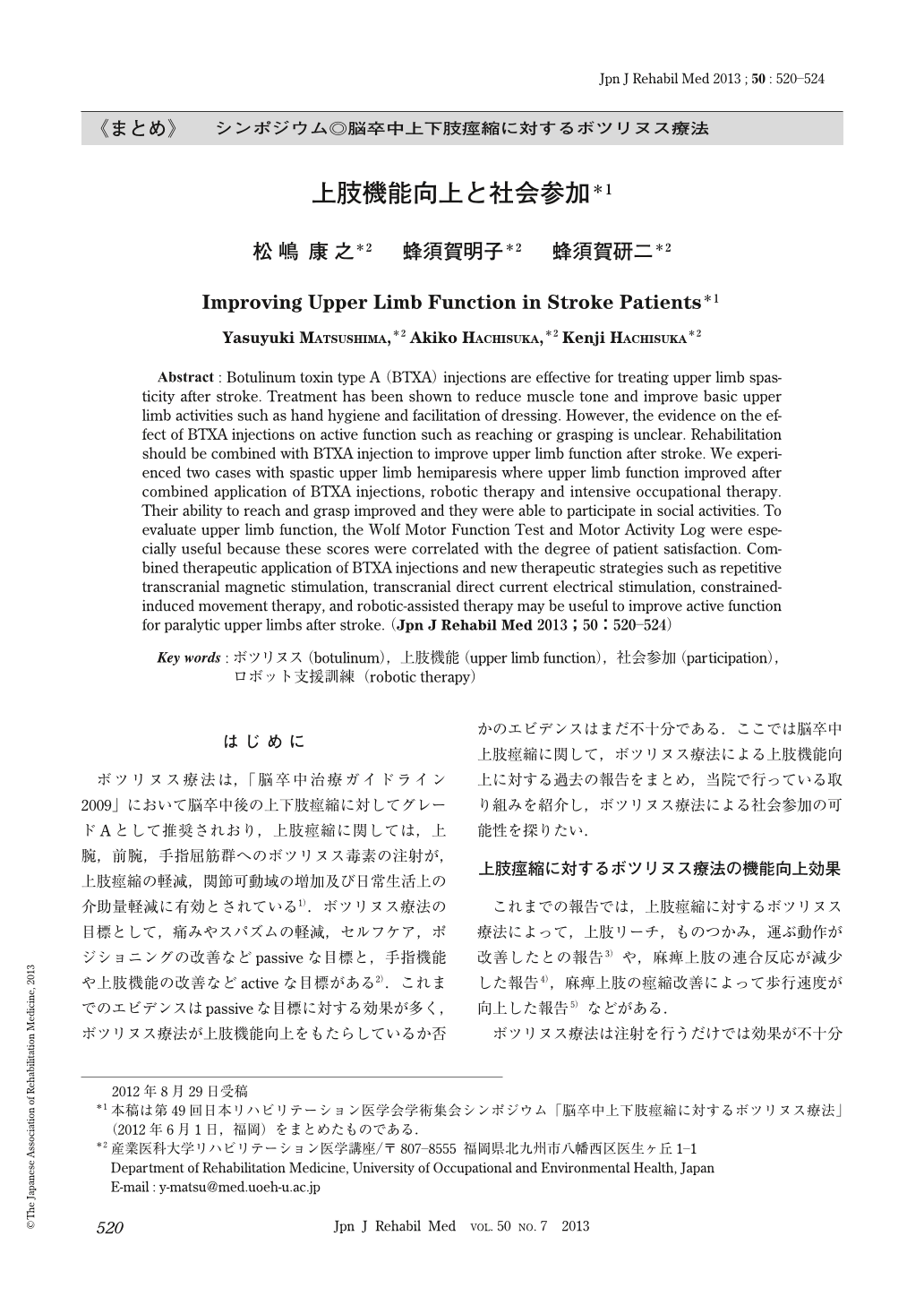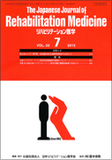Japanese
English
- 販売していません
- Abstract 文献概要
- 1ページ目 Look Inside
- 参考文献 Reference
はじめに
ボツリヌス療法は,「脳卒中治療ガイドライン2009」において脳卒中後の上下肢痙縮に対してグレードAとして推奨されおり,上肢痙縮に関しては,上腕,前腕,手指屈筋群へのボツリヌス毒素の注射が,上肢痙縮の軽減,関節可動域の増加及び日常生活上の介助量軽減に有効とされている1).ボツリヌス療法の目標として,痛みやスパズムの軽減,セルフケア,ポジショニングの改善などpassiveな目標と,手指機能や上肢機能の改善などactiveな目標がある2).これまでのエビデンスはpassiveな目標に対する効果が多く,ボツリヌス療法が上肢機能向上をもたらしているか否かのエビデンスはまだ不十分である.ここでは脳卒中上肢痙縮に関して,ボツリヌス療法による上肢機能向上に対する過去の報告をまとめ,当院で行っている取り組みを紹介し,ボツリヌス療法による社会参加の可能性を探りたい.
Abstract : Botulinum toxin type A (BTXA) injections are effective for treating upper limb spasticity after stroke. Treatment has been shown to reduce muscle tone and improve basic upper limb activities such as hand hygiene and facilitation of dressing. However, the evidence on the effect of BTXA injections on active function such as reaching or grasping is unclear. Rehabilitation should be combined with BTXA injection to improve upper limb function after stroke. We experienced two cases with spastic upper limb hemiparesis where upper limb function improved after combined application of BTXA injections, robotic therapy and intensive occupational therapy. Their ability to reach and grasp improved and they were able to participate in social activities. To evaluate upper limb function, the Wolf Motor Function Test and Motor Activity Log were especially useful because these scores were correlated with the degree of patient satisfaction. Combined therapeutic application of BTXA injections and new therapeutic strategies such as repetitive transcranial magnetic stimulation, transcranial direct current electrical stimulation, constrained-induced movement therapy, and robotic-assisted therapy may be useful to improve active function for paralytic upper limbs after stroke.

Copyright © 2013, The Japanese Association of Rehabilitation Medicine. All rights reserved.


